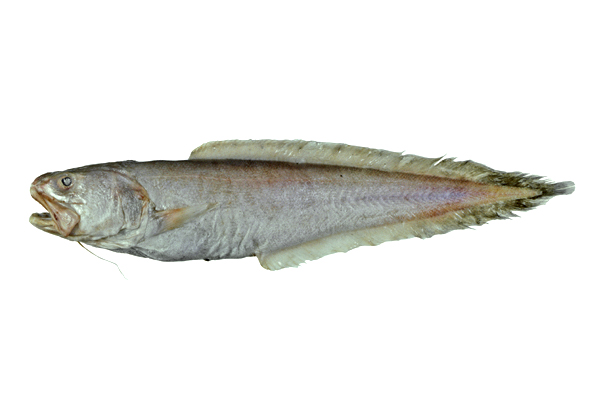Armoured Cusk, Hoplobrotula armata (Temminck & Schlegel 1847)

Armoured Cusk, Hoplobrotula armata. Source: Australian National Fish Collection, CSIRO. License: CC by Attribution-NonCommercial
Summary:
Juveniles have several black, vertical bars continuing onto the dorsal and anal fins as blotches.
Cite this page as:
Bray, D.J. 2018, Hoplobrotula armata in Fishes of Australia, accessed 06 Jul 2025, https://fishesofaustralia.net.au/Home/species/2860
Armoured Cusk, Hoplobrotula armata (Temminck & Schlegel 1847)
More Info
|
Distribution |
Off Shark Bay, Western Australia, to off Melville Island, Northern Territory, and off the Great Barrier Reef to off the Sunshine Coast, Queensland. Elsewhere the species occurs in the Indo-west Pacific. |
|
Features |
Body rather elongate, head blunt; eye almost as long as snout; snout spine long, sharp and strong; sensory pore present just above anterior nostril; upper jaw extending well behind eye; preopercle with 3 sharp spines; opercle with 1 strong spine; 1 median and a pair of basibranchial tooth patches; dorsal fin 85-90; pelvic fin inserted beneath eye with 2 rays, not extending beyond head. |
|
Species Citation |
Brotula armata Temminck & Schlegel 1847, Fauna Japonica 4(14, 15): 255. Type locality: Japan. |
|
Author |
Bray, D.J. 2018 |
|
Resources |
Armoured Cusk, Hoplobrotula armata (Temminck & Schlegel 1847)
References
Fujikura, K., Okutani, T. & Maruyama, T. 2012. Deep-sea life —Biological observations using research submersibles: Second Edition. Tokai University Press, Kanagawa, Japan, 487 pp. (in Japanese).
Gloerfelt-Tarp, T. & Kailola, P.J. 1984. Trawled Fishes of Southern Indonesia and Northwest Australia. Jakarta : Dir. Gen. Fish. (Indonesia), German Tech. Coop., Aust. Dev. Ass. Bur. 406 pp.
Larson, H.K., Williams, R.S. & Hammer, M.P. 2013. An annotated checklist of the fishes of the Northern Territory, Australia. Zootaxa 3696(1): 1-293
Lindberg, G.U. & Krasyukova , Z.V. 1975. Fishes of the Sea of Japan and adjacent territories of the Okhotsk and Yellow Sea. Part 4. Teleostomi. XXIX. Perciformes. 2. Blennioidei - 13. Gobioidei. (CXLV. Fam. Anarhichadidae--CLXXV. Fam. Periophthalmidae). pp. 1-463, 329 figs. [In Russian. English translation: Lindberg, G.U. & Krasyukova, Z.V. 1989. Fishes of the Sea of Japan and the adjacent areas of the Sea of Okhotsk and the Yellow Sea. 4. Fishes of the Sea of Japan and the adjacent areas of the Sea of Okhotsk and the Yellow Sea. Part 1. Part 4: i-xxvi + 1-602]
Nielsen, J.G., Cohen, D.M., Markle, D.F. & Robins, C.R. 1999. Ophidiiform Fishes of the World. An annotated and illustrated catalogue of pearlfishes, cusk-eels, brotulas and other ophidiiform species known to date. FAO Fisheries Synopsis No. 125 Vol. 18. 178 pp.
Nielsen. J.G. 1999. Families Carapidae, Ophidiidae, Bythitidae, Aphionidae. pp. 1978-1985 in Carpenter, K.E. & Niem, V.H. (eds). The Living Marine Resources of the Western Central Pacific. FAO Species Identification Guide for Fisheries Purposes. Rome : FAO Vol. 3 pp. 1397-2068.
Temminck, C.J. & Schlegel, H. 1847. Pisces. 248-289 pls 111-128, 129 (in part) in Siebold, P. Fr de (ed.) Fauna Japonica. Leyden : Apud Arnz & Socios Vol. 4(14, 15).




